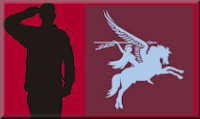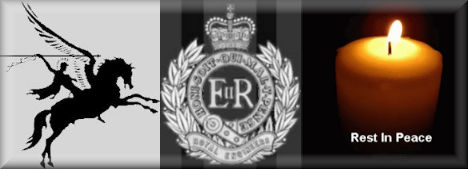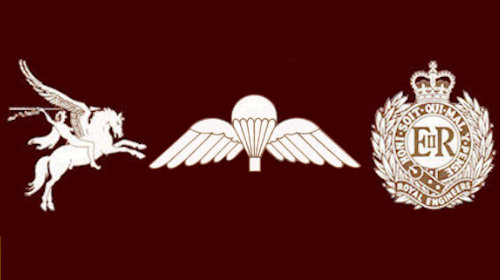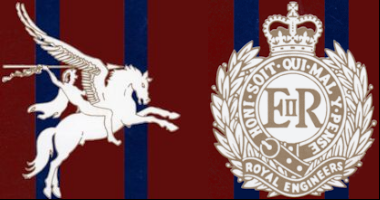
Roll of Honour

Major General FWJ Cowtan CBE, MC*
Born 10th February 1920. Died 1st January 2010, aged 89
A short, brusque but ebullient man, John Cowtan generated energy and purpose to what some judged an excessive degree. He was certainly not one to rest on his laurels and was restlessly anxious that no one around him should do so either.
Frank Willoughby John Cowtan was the son of Air Vice-Marshal F. C. Cowtan, sometime an Honorary Surgeon to George VI. Educated at Wellington and the RMA Woolwich, he was commissioned into the Royal Engineers in July 1939 and joined the British Expeditionary Force in France early in 1940. When the German offensives through Belgium and northern France were launched in May, although only a 2nd lieutenant, he became adjutant of an ad hoc force of Engineers and base troops around Rouen, under the command of Major (later Major-General) L. E. C. M. Perowne, responsible for dealing with any German parachute attack on the port. None came and “Perowne’s Rifles” were evacuated through Cherbourg and Saint-Malo after Dunkirk.
In England he served with the 50th Northumbrian Division as an Engineer section commander in 232 Field Company during the invasion scare period of the following winter, before leaving for the Middle East with 50th Division in the spring of 1941. After duties in Egypt, Cyprus and Palestine, he reached the Western Desert in 1942 at the time when groups of all arms known as “Jock Columns”, after Major-General “Jock" Campbell, VC, who had introduced them, were operating against German and Italian forward outposts, lines of communication and airstrips.
He won his first Military Cross in March 1942 with a column provided by 4th Battalion The East Yorkshire Regiment sent, with supporting armour and artillery, to attack an airfield at Martuba to prevent Axis aircraft there harassing a convoy to Malta. The citation for Cowtan’s immediate award described his action under intense shellfire as an example to all.
Two months later, during Rommel’s Afrika Korps offensive through the “box” positions forming the 8th Army’s Gazala line, he was taken prisoner when 150 Infantry Brigade, to which 4th East Yorkshires and his field company belonged, was eliminated as a fighting force. He was shipped to Italy and held in a prison camp near Bologna until the Italian Armistice on September 3, 1943.
Conflicting instructions reaching Allied prisoners of war in Italy led many to take to the hills as soon as their Italian guards disappeared, while others remained in their camps awaiting liberation by the advancing Allied armies. The German Army reacted swiftly, taking over the camps in preparation for sending their inmates to Germany. With two other officers, Cowtan hid on the roof of one of the Bologna camp buildings for 12 days to avoid going to Germany and left once the camp was abandoned.
He and his two companions joined a group of partisans in the mountains to the south until hearing an Allied radio broadcast, in November 1943, announcing an evacuation for escaped prisoners from Italian east-coast ports. After informing other escapees in the region of the scheme, he and one companion set out for one of the pick-up points but were prevented from reaching it by heavy falls of snow. A further attempt to assemble and evacuate escaped prisoners by sea was made in March 1944 but Cowtan was unable to take advantage of this, so he and two soldier companions decided to head northwest for the French frontier.
Fifty miles from Genoa, they fell in with a band of partisans intent on sabotaging German lines of communication. Cowtan put his knowledge of demolition work to use by training the partisans and supervising the blowing up of culverts and railway lines. This continued until October 1944, when partisan guides led him and his companions through the German units withdrawing to the Gustav Line, on which Field Marshal Kesselring was preparing to stand for the winter, to join the Allied armies advancing north. Subsequently, he was awarded a bar to his MC in recognition of his escape and exploits with the partisans.
On return to England, he volunteered for Airborne Forces and, after parachute training, accompanied the 6th Airborne Division to Palestine. This deployment was intended to counter any Soviet move on the Iranian oil fields, but British troops were soon heavily involved in trying to contain the terrorist campaign carried out by Irgun Zwai Leumi and the Stern Gang. When the latter blew up the British headquarters in the King David Hotel in Jerusalem on July 22, 1946, no Sappers were readily available to undertake the rescue work. Cowtan brought his 9th Airborne Engineer Squadron to the scene from 40 miles away and began working round the clock. As well as the 91 dead, his men brought out six survivors, including one who had been buried for more than 70 hours. He was appointed MBE for this rescue effort.
On return to England before the Palestine evacuation, he went to the Royal Military College of Science as a student, but failed to satisfy the college authorities of his scientific credentials, not improbably because he did not want to spend two years in a classroom. He graduated from the Staff College, Camberley’s single-year course in 1951 and returned to the Middle East as an operations staff officer at Command Headquarters in Egypt.
He built a formidable reputation while on the staff of the Royal School of Military Engineering at Chatham, before going to the United States to become the British liaison officer at the US Army’s Engineer establishment in Virginia. He then commanded, in succession, 131 Parachute Engineer Regiment, RE, Victory College at RMA Sandhurst and the 11th Engineer Brigade in Germany. He then became Director of Quartering, which led to his being advanced to CBE and promotion to major-general as Deputy Quartermaster-General in the Ministry of Defence. Finally it gave him wry satisfaction to be appointed Commandant of the Royal Military College of Science, from where he had been so summarily ejected 20 years earlier.
On leaving the Army in 1975, he served as Honorary Colonel of 131 Independent Commando Squadron, RE and was Colonel Commandant Royal Engineers, 1977-82. Apart from working as deputy director of the Country Land and Business Association from 1978 to 1986, he spent his time shooting, travelling and in the study of languages.
He was married to Rose Cope in 1949. He is survived by her and by a son and daughter.
General John Cowtan and 131 Indep Para Sqn RE (V) by John Lee, AEA President
General John took over as CO of 131 Parachute Engineer Regt in 1960 from Lt Col I Wellstead, and commanded for 2 years, handing over to Lt Col P J Pellerau in 1962. I joined the squadron in 1967 so I cannot give any personal details of his time as CO, perhaps some of you out there can fill the gaps.
In 1975 he was appointed Honorary Colonel of 131 Indep Parachute Sqn RE (V) as 131 had now become and attended their camp at Wyke Regis in the August of that year. This was an interesting camp as at that time 131 had a ‘French Connection’ in the form of a number of French Reserve Army parachute instructors who had come over for a week to see how the ‘Anglaise’ did things.
The visit to the Bridging Camp was probably the first time many squadron members had met the new Hon Col and General John showed a keen interest in the training being undertaken. Luckily it was a warm sunny day and the inevitable happened with Gen John being unceremoniously thrown into the Fleet, service dress trousers, shoes and all! After he was on dry(ish) land he exclaimed that he did not think much of 131 ’s drill and promptly marched the whole sqn into the drink. Having dried out at his hotel and changed into Mess Kit, I drove Gen John to the camp for a Dinner and Games night. It was at the latter that our French guests found out about the true spirit of Airborne Forces. They could not understand how a Major General could be hit over the head with a rolled up newspaper by a Sgt Major, (John Brennan), both rolling about on the floor, and the latter not being taken out and shot at dawn! We were informed that such going on’s do not happen in the French army!
After that first visit Gen John made various visits to 131 including the farewell function for John Smith when it was revealed what was really said when Big John would despatch the general from a balloon, but I won’t go into that now!
In 1976, prior to the disbandment of 44 Para Bde, the minor units including 131 officially stopped parachuting, and the future looked poor, but Gen John took up the cudgels after publication of the Owens Report into the Engineer support for 3 Cdo Bde. After much discussion, meetings and consultations at the highest level it was confirmed by the MoD that from the 1 April 1978, 131 Squadron would re-role as a Commando Squadron. That 131 were saved from disbandment is directly due to the determined efforts by Gen John over the previous 18 months or so. It was fitting that when the first passout in April 1978 when maroon berets were exchanged for green ones that Maj General John Cowtan took the salute.
The next time I saw Gen John was at the 25th anniversary of the ‘Trent Chase’ disaster at Cromwell Lock to commemorate the 10 members of 300 Troop who drowned there whilst on exercise in 1975.
Gen John was succeeded by Brigadier Barker-Wyatt as Honorary Colonel in 1980 and after then direct contact with him was of necessity reduced, however, all members of the squadron who had had the good fortune to serve under him always held him in very high stead. It was a pleasure to meet him, and hearthat gruff voice again, at the 60th anniversary and reunion of 131 in 2007.
I for one will remember him as a fine leader of men and the one person who brought 131 from an imminent disbandment in 1978 to become probably the best TA unit at the present time.












